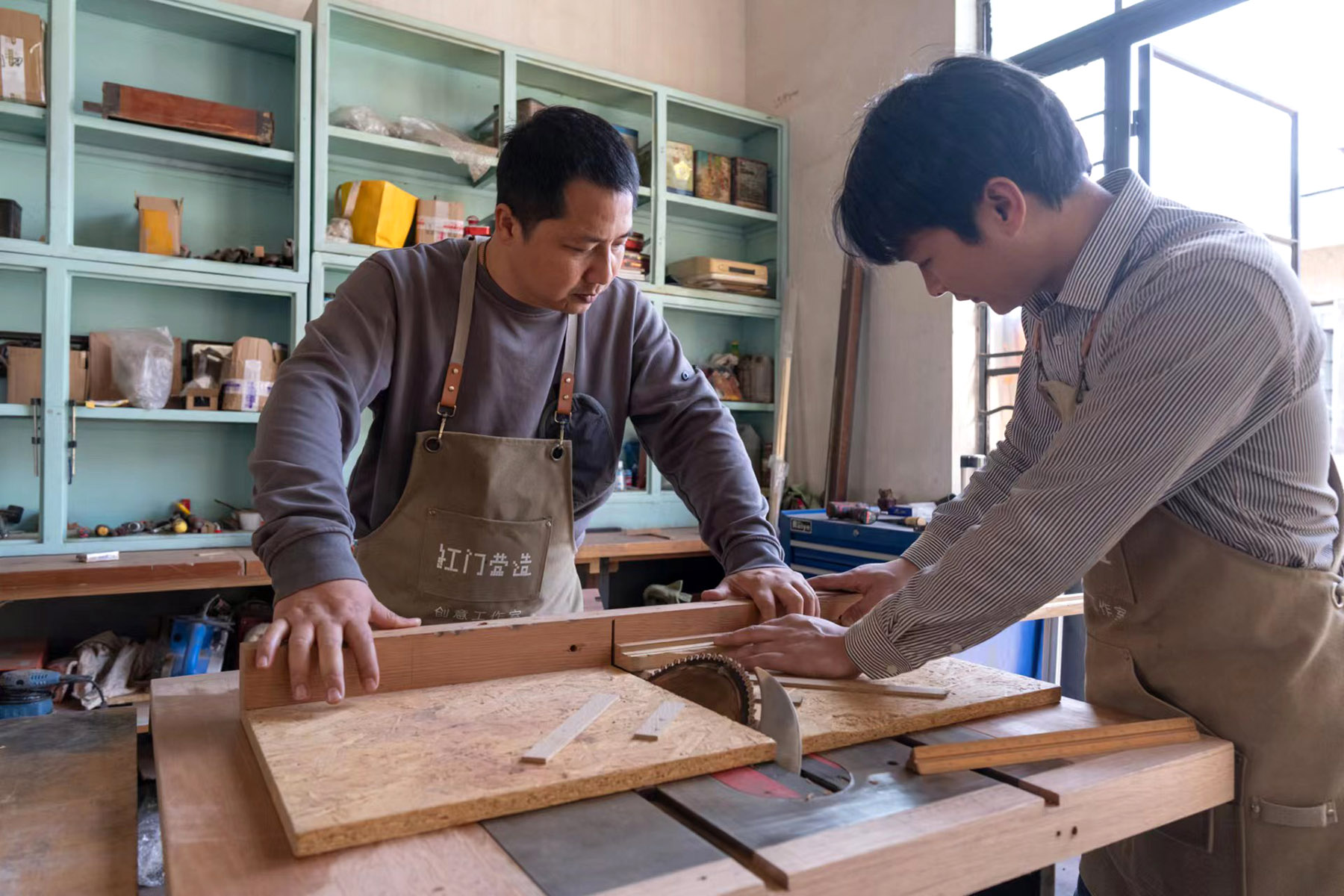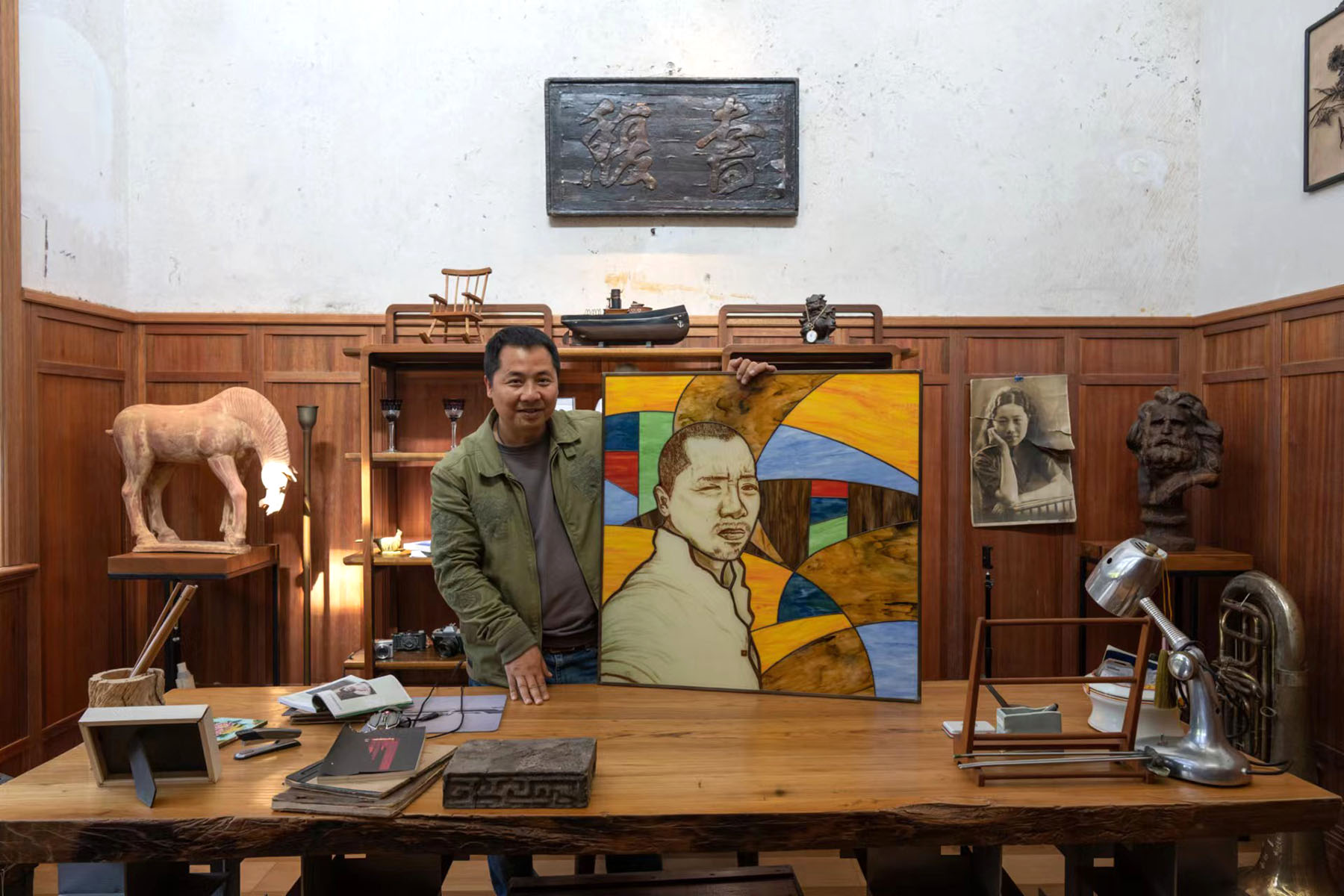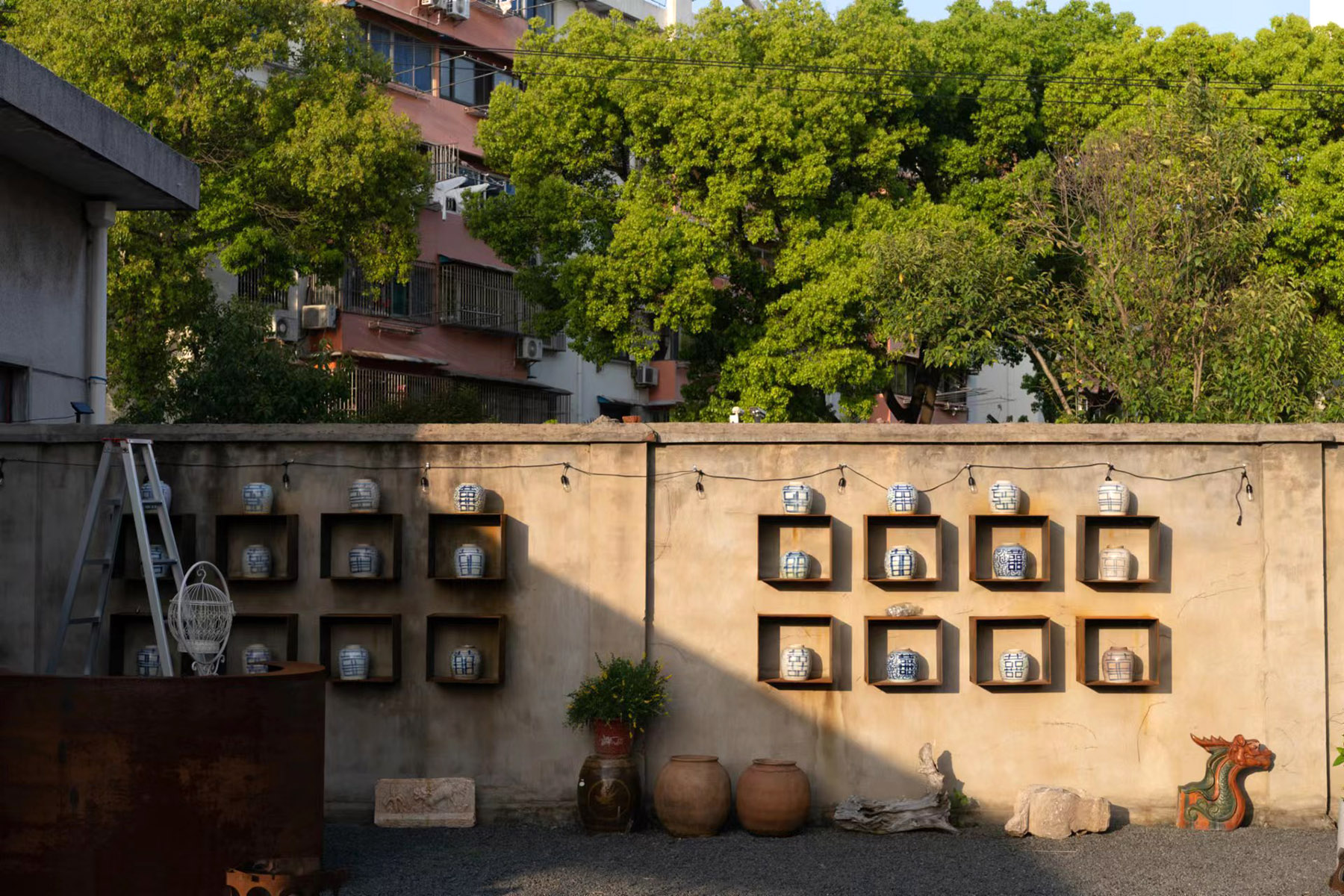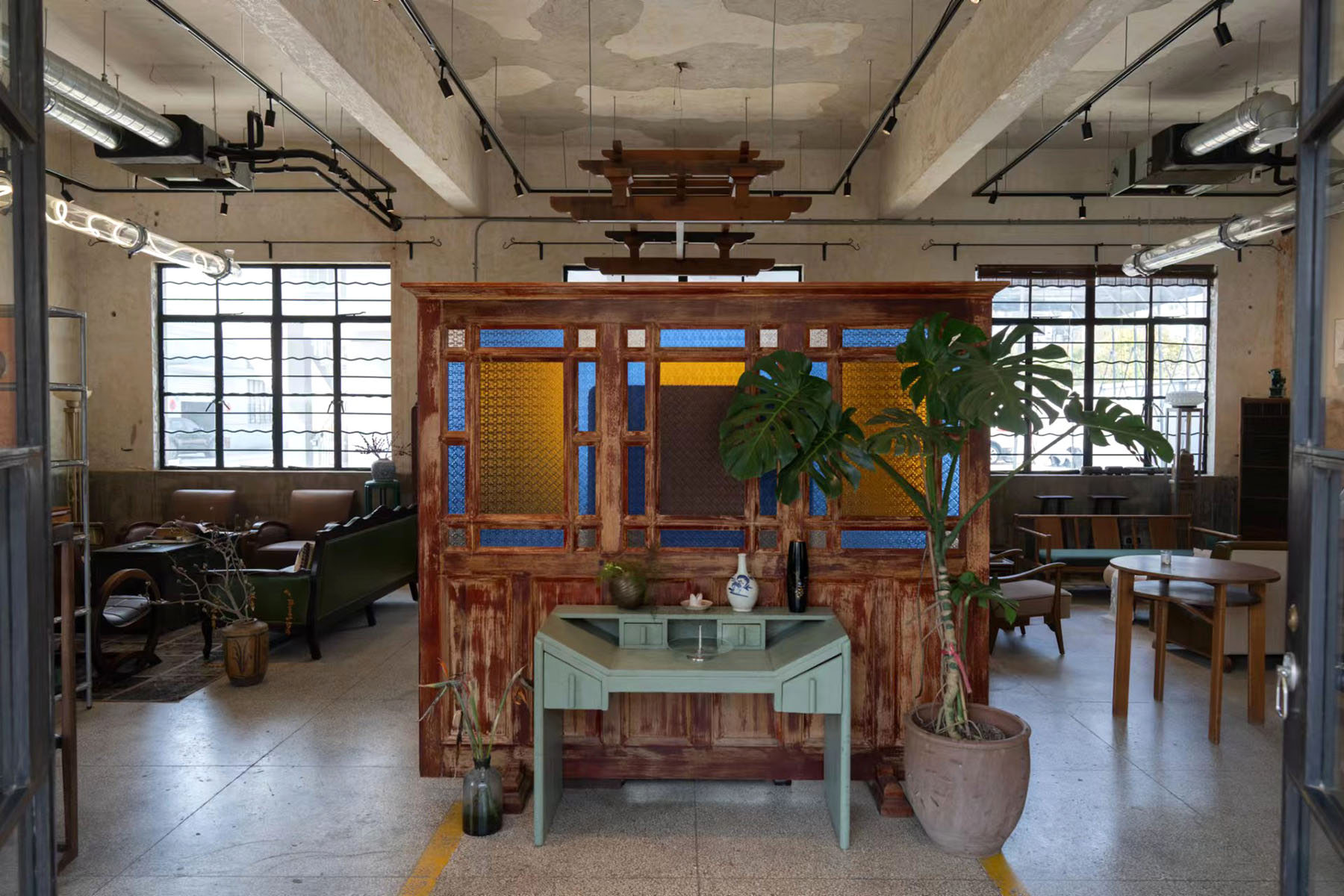The historical legacy of the country's most internationalized port city continues to imbue its home decor with a unique chic that blends East and West, Wang Xin reports.

Ke Haiqi has been captivated by the enduring charm of Shanghai-style furnishings and, consequently, committed to bringing them back into fashion for about two decades.
The 44-year-old was born in Ningbo, East China's Zhejiang province, and came to Shanghai before 2000.He specializes in old Shanghai-style villa restoration and decoration. Shanghai furnishings have continued showcasing the city's unique charm and have remained popular since early last century.
Shanghai-style furniture is simple, practical, innovative and integrated, just like the city and people who live here.
Ke Haiqi, specialist in old villa restoration and decoration
"The old Shanghai-style furniture, typically referring to pieces from the 1920s to '50s, presents a perfect blend of Eastern and Western cultures, and has amalgamated various styles, such as art deco, minimalism and modernism, and such features as practicality and inclusiveness," says Ke.
The development of Shanghai-style furniture is said to date back to 1843, when the city opened its port and Western culture and people poured in, leading to a blend of furniture, ranging from Western imports to local pieces featuring traditional elements. Ke explains that the category is not defined merely by certain materials, patterns, structures, decorations or craftsmanship but is more like a general, overall style.
READ MORE: The extravagance of simplicity
Its biggest characteristic is the mixture of classic and modern, and Eastern and Western elements.
"Furnishings are usually a reflection of people's lifestyles during a particular period, because furniture is functional and closely related to people's daily lives. Shanghai-style furniture is simple, practical, innovative and integrated, just like the city and people who live here," Ke adds.

Although Shanghai furniture tends to replicate pieces from the first half of the 20th century, it never looks outdated. Instead, it remains fashionable, modern, innovative and functional.
"Art deco is Shanghai-style furniture's most distinctive characteristic," says Ke.
Art deco originated in France in the 1920s. It's a prominent decorative-art genre that emerged in the early 20th century that emphasizes symmetry, geometric shapes, mirror-like effects, bright colors and decorative patterns. It is widely used in various mediums, such as architecture, interior design, jewelry, fashion and visual arts.
"Art deco itself is pretty inclusive, since it features elements from various countries. When it comes to Shanghai-style furnishings, this inclusiveness is expanded more by incorporating traditional Chinese and, specifically, the Shanghai elements," Ke adds.
He points to a folding screen in his studio as an example. He explains that its style probably comes from Japan, while the designs carved using Chinese craftsmanship tell a traditional Chinese story.
In addition to the mixture of cultural elements, art deco features are also presented in the modeling, structural design and patterns of Shanghai-style furniture.

In his studio, Ke showcased an old cupboard with the patterns of the rose and nightingale, which he believes are inspired by Oscar Wilde's The Nightingale and the Rose. Besides, the cupboard is decorated with geometric patterns and layers on the edges, a representative interpretation of art deco style.
Having engaged in old Shanghainese villa restoration for about two decades, Ke has gotten into the habit of reusing the original furnishings' parts. This not only serves environmental protection and waste reduction but also works well because these pieces are old yet never outdated.
"These components, such as door handles and locks, are closely related to the styles of the furniture and of the whole buildings of previous periods. Then, the buildings, with diverse and blended styles, form a whole Shanghai of that time."
He points to a set of door handles in his studio and says: "Look at these. They actually still look fashionable, modern and lovely, don't they? I myself would still be willing to pick them today."
Ke isn't the only one who shares this notion. Shanghai furniture has been popular with foreign buyers in the city since late last century. And it has likewise been gaining popularity among younger Chinese in recent years.
"In the past, foreign customers in the city were the main consumers of Shanghai-style furniture. They lived in old villas with Western features," Ke explains.

"Nearly all of my early clients were foreigners when I started doing villa restorations around 2000. They tended to purchase more old Shanghai-style furniture because of the blend of international and local elements," Ke recalls. "It is like they were seeking a kind of balance, and such furniture played a role as a 'middleman' to offer them an integrated experience."
Ke has restored more than a hundred local villas over the past two decades and has continued to witness changes among his clientele and new trends in his field.
"The number of local clients (for vernacular villas and furniture) is growing. Most are aged 30 to 50, including both Shanghai natives and 'new' Shanghai people who resettled in the city. We also see clients from across China buying Shanghai-style furnishings, such as people from Zhejiang and Yunnan provinces, as well as Xinjiang Uygur and Xizang autonomous regions."
Client Tang Lei, a 44-year-old business owner from Kunming, Yunnan province, says: "Personally, I especially like antique Shanghai-style furniture, in which you can clearly see the intersection of Eastern and Western cultures. Some traditional Chinese furniture might seem a bit 'heavy' and complicated. The simplicity and delicacy of Shanghai furniture is just right.
"Also, I'm fond of art deco, with its geometric lines and strong sense of adornment. Most importantly, Shanghai-style furniture focuses much on functionality, comfort and a sense of ritual in life," Tang adds.

Ke says that Shanghai-style furniture isn't exclusive to Shanghai but is more of a decorative art that can fit freely into diverse arrangements and styles anywhere.
"After all these years, I would say that clients' demand for furniture has actually remained the same. They make choices based on their aesthetic preferences, lifestyle habits and practical needs. We also receive many customization requests for furniture with modern functionality, just like clients in the past," says Ke.
He has connected with enthusiasts from around the world and hopes to bring greater awareness of the charm of Shanghai-style furniture and its related culture.
ALSO READ: Woodworking artisan strengthens cultural ties
Before establishing his current studio in Jiading district, Ke opened Loushi Coffee on Nanchang Road in Huangpu district from 2009 to 2020. The cafe was also a display space for Shanghai furnishings that Ke had collected, restored and designed. It attracted many designers and customers from different countries and walks of life.
Now, he has even greater goals.
"We hope to make our studio more than a private space for display but also a place for exhibitions, experiences, courses, interactive activities and communications to help more people learn more about Shanghai culture," he says.
"And in the long term, instead of 'restoring' Shanghai-style furniture, we hope that we can 'create' Shanghai-style decor and spaces."
Contact the writer at wangxin2@chinadaily.com.cn


